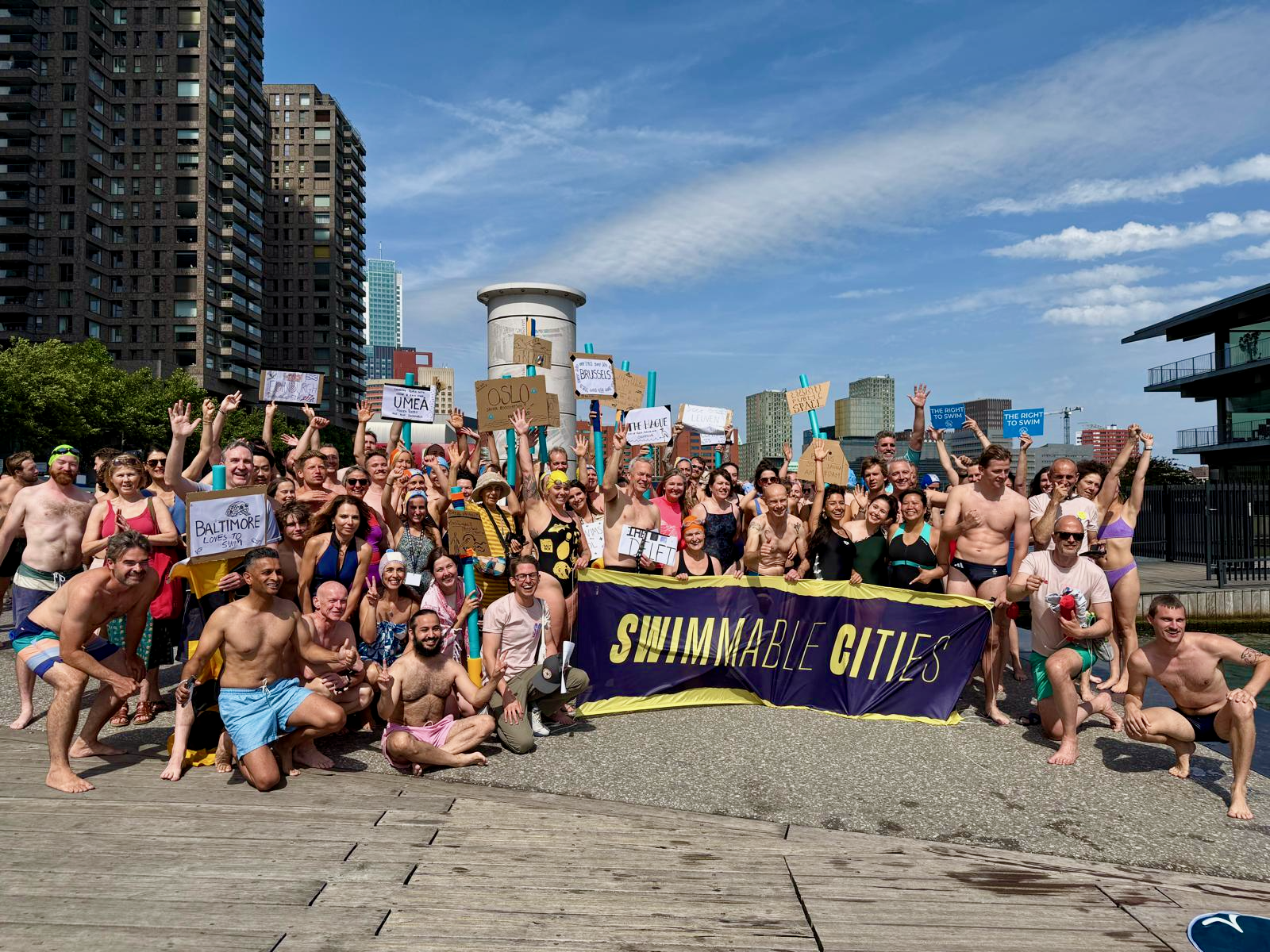
Swimmable Cities is a global alliance of organizations transforming urban waterways according to the following principles:
-
1. THE RIGHT TO SWIM
Safe, healthy and swimmable waterways should be accessible to all people.
-
2. ONE HEALTH, MANY SWIMMERS
Swimmable urban waterways are vital to the liveability of cities and communities, as shared civic places that promote the health of people (physically, mentally, spiritually) and the health of Mother Earth.
-
3. URBAN SWIMMING CULTURE
Urban swimming culture is a unique expression of life in cities and communities, reflecting the distinct interplay of sports, recreation and tourism in each given place, as well as natural and cultural heritage.
-
4. WATER IS SACRED
Urban swimming should celebrate natural waterways as living, integrated entities that nurture communities, promoting universal accessibility and peaceful coexistence inclusive of religious, cultural, and gender diversity.
-
5. REWRITING THE RULES
Urban waterway swimming should become part of a new status quo in public access standards, challenging accepted conventions such as industrial uses and stormwater pollution, with governing authorities swiftly amending legal and regulatory frameworks to enable citizens access to its benefits.
-
6. DEMOCRATIC PARTICIPATION IN SWIMMING PLACES
Urban swimming places and experiences should be planned, designed, made and operated through inclusive, integrated water management approaches; with managers ensuring universal access via community-led programs for learning how to swim in natural waterways and ecological literacy.
-
7. RECONNECTION & RESILIENCE
Urban swimming places and experiences should be invested in as an innovative way to enable resilient communities to adapt and thrive in a changing global climate, environment, and economy.
-
8. NEW ECONOMIC OPPORTUNITIES
Urban swimming development models should balance social, cultural, ecological, and economic values, creating new jobs, careers, and livelihoods in regenerative professions and industries.
-
9. SHARING WELLBEING BENEFITS, CULTURE & KNOWLEDGE
Urban swimming should create wellbeing benefits to local citizens, ecosystems, and economies; enhanced by the respectful sharing of Indigenous, traditional, and Western water culture knowledge.
-
10. STEWARDSHIP FOR TODAY, TOMORROW & FUTURE GENERATIONS
Urban swimmers are stewards responsible for protecting the health of their local waterways, working alongside Mother Earth’s closest carers, such as Indigenous peoples, rangers, and waterkeepers, as well as urbanists, architects, social changemakers, educators, and policy-makers.
Learn More
The Swimmable Cities Handbook provides an introduction to the world of urban swimming for those reimagining their city waterways.
Join the movement
Sign the Swimmable Cities Charter and join the vibrant global network for the urban swimming movement!
